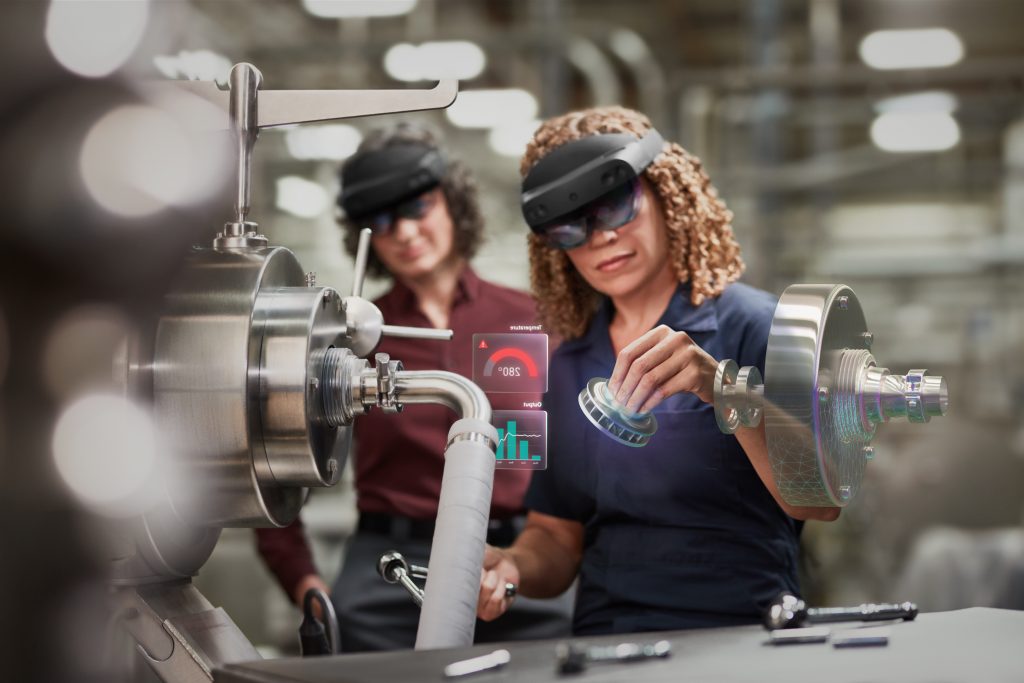
Modernizing product innovation: where smart manufacturing and mixed reality converge
The manufacturing industry is no stranger to modernization. Robots like those making headlines across the technology sector have long been staples of large-scale assembly lines. Product distribution pipelines have for years taken advantage of bespoke routing and mapping solutions. Even the collection of data derived from customer-owned connected devices has become old hat. However, the same level of modernization has just begun to influence how businesses bring products from concept to production.
Bridging the Divide Between Digital Products and Intelligent Manufacturing
Download this white paper from Frost & Sullivan for insights on how to accelerate innovation and create the products your customers really want
Whether companies are developing entirely new product lines or innovating on last year’s designs, the product innovation process today generally moves from ideation through a stage-gated process of experimentation, market testing, surveys, and validation. It is a tried-and-true system, but it has become a bottleneck in an otherwise highly modernized sector.
One reason the innovation process has, until now, lagged behind the rest of the manufacturing industry is its inherent need for time. Product innovation requires creativity and an understanding of the market—factors that can’t be rushed. Thankfully, a manufacturing company’s ability to collect data has never been as potent as it is today. New data sources like IoT telemetry, AI, and insights from cloud computing join traditional customer and sales data to create a more holistic view of the market than ever before. Easy access to this wealth of information can help employees develop innovative ideas quicker.
Though legacy CRM and ERP apps departmentally silo data, Microsoft Dynamics 365 Customer Insights efficiently breaks down these barriers. Intuitive dashboards created with Microsoft Power BI can incorporate information from often-overlooked sources like call centers and field service interactions, displaying this alongside user data from connected devices, social media sentiment, and more traditional sources. With a 360-degree view of their customers and products, employees can spend more of their working hours generating innovative ideas, instead of searching for information.
Gathering information quickly into digestible insights is only half of the equation when it comes to product development, however. To compete in a sector regularly flooded with newly redesigned competing products, manufacturers will also need to expedite experimentation, prototyping, and validation. With intelligent digital twin solutions viewable in mixed reality, manufacturers can bridge the divide between physical and digital. These connected digital twins allow employees to experiment with designs before a prototype is even created—long before any changes are made to the manufacturing process.
Whole new realms of product development efficiency become possible when you implement the new class of digital twin solutions on Microsoft Azure Digital Twins with Dynamics 365 Layout and an augmented reality (AR) device like Microsoft HoloLens. This emergent platform allows you to interact with your prototypes in dramatic new ways—at scale and in the context of its eventual customer use case. With this contextual view, you can more quickly move products from concept to completion. You can edit digital twins on the spot, share them with stakeholders via video calls or AR, and quickly incorporate real-time feedback to accelerate the iterative development process.
It is also important to look into improving the efficiency of those aspects of the product development process that do not center on human interactions. That’s where cloud computing comes in. Even if you’ve got robust onsite processing capabilities, the on-demand scalability of big compute resources can save you time. You can run simulations on multiple design parameters simultaneously, and you can do so in a shorter time frame than any single onsite server setup allows for.
By implementing a single solution that incorporates the benefits of Dynamics 365, HoloLens, and IoT big compute, you’ll unlock the connected innovation process that is already beginning to drive disruption in the manufacturing industry today.
For more on how to reimagine manufacturing, and the connected product innovation process, get some inspiration from our launch of Hololens 2 and Dynamics 365 mixed reality applications – and don’t miss the PACCAR video!




